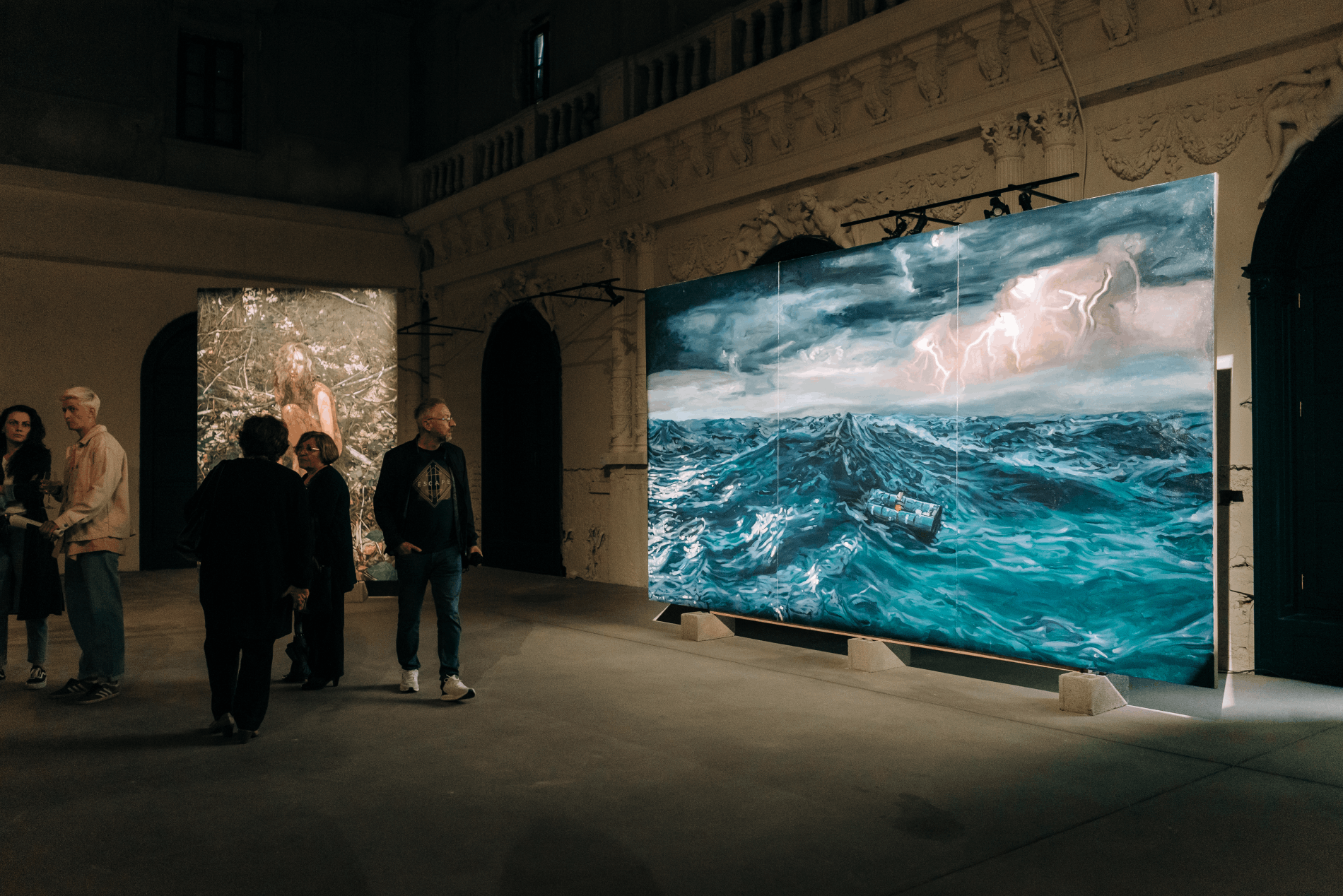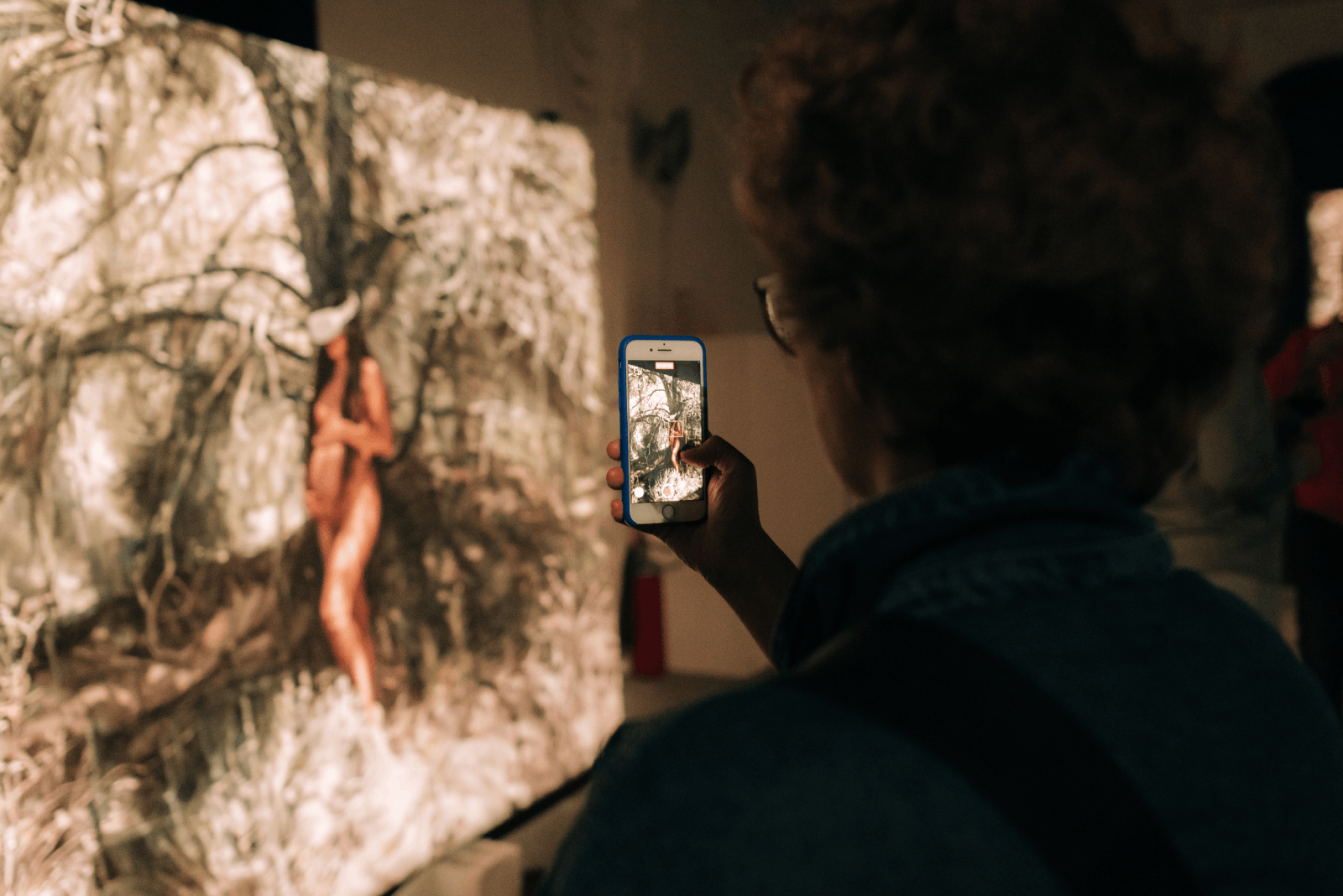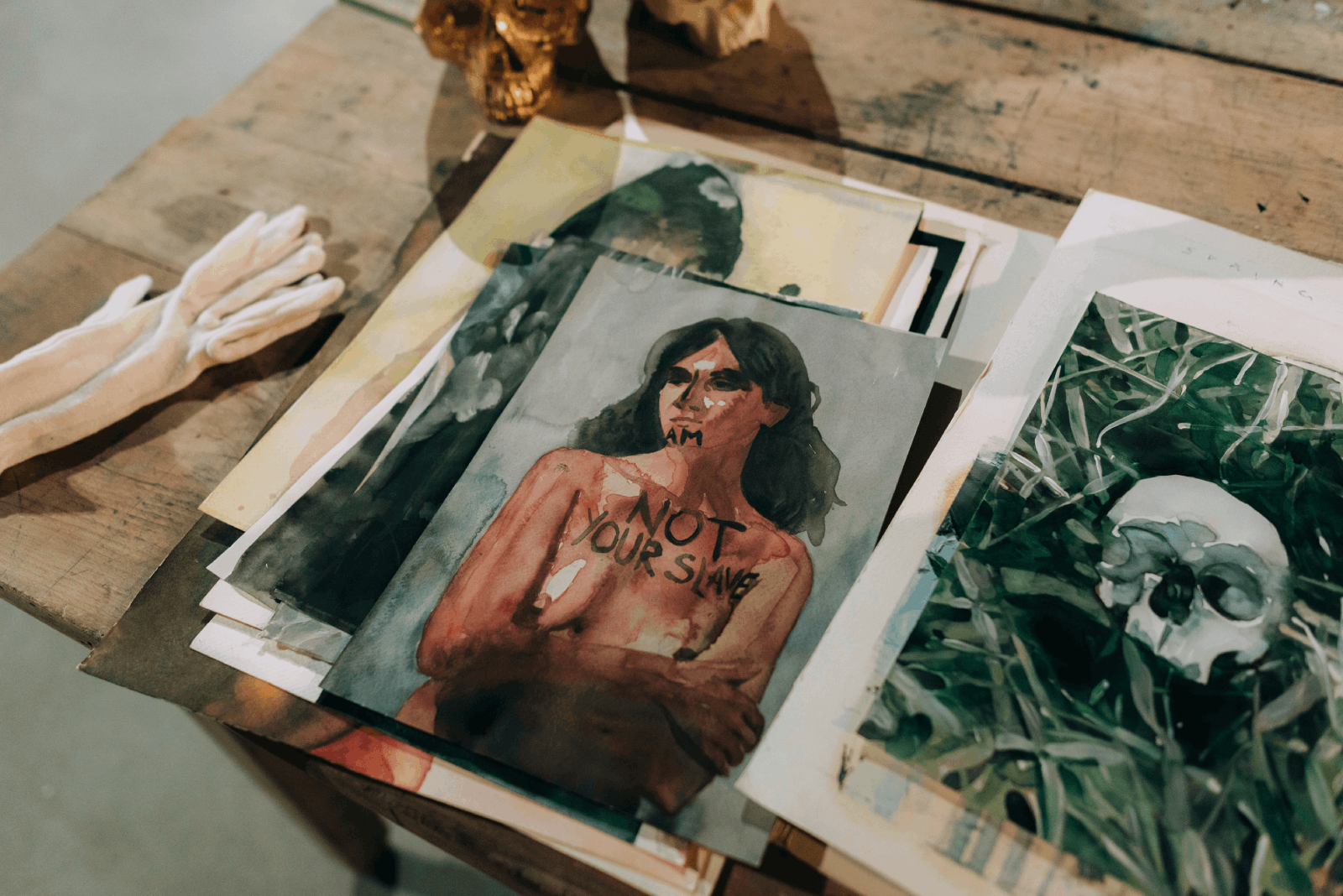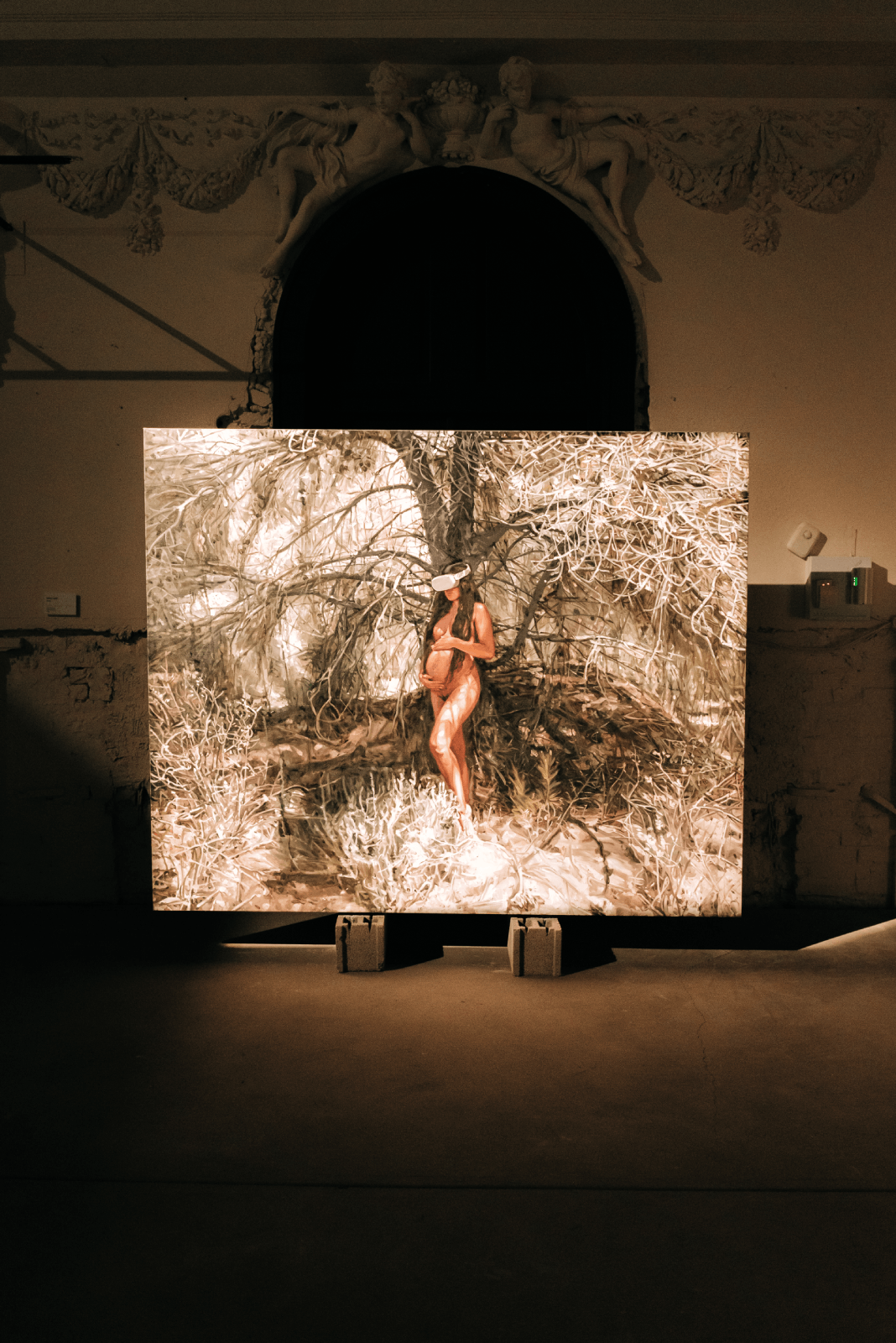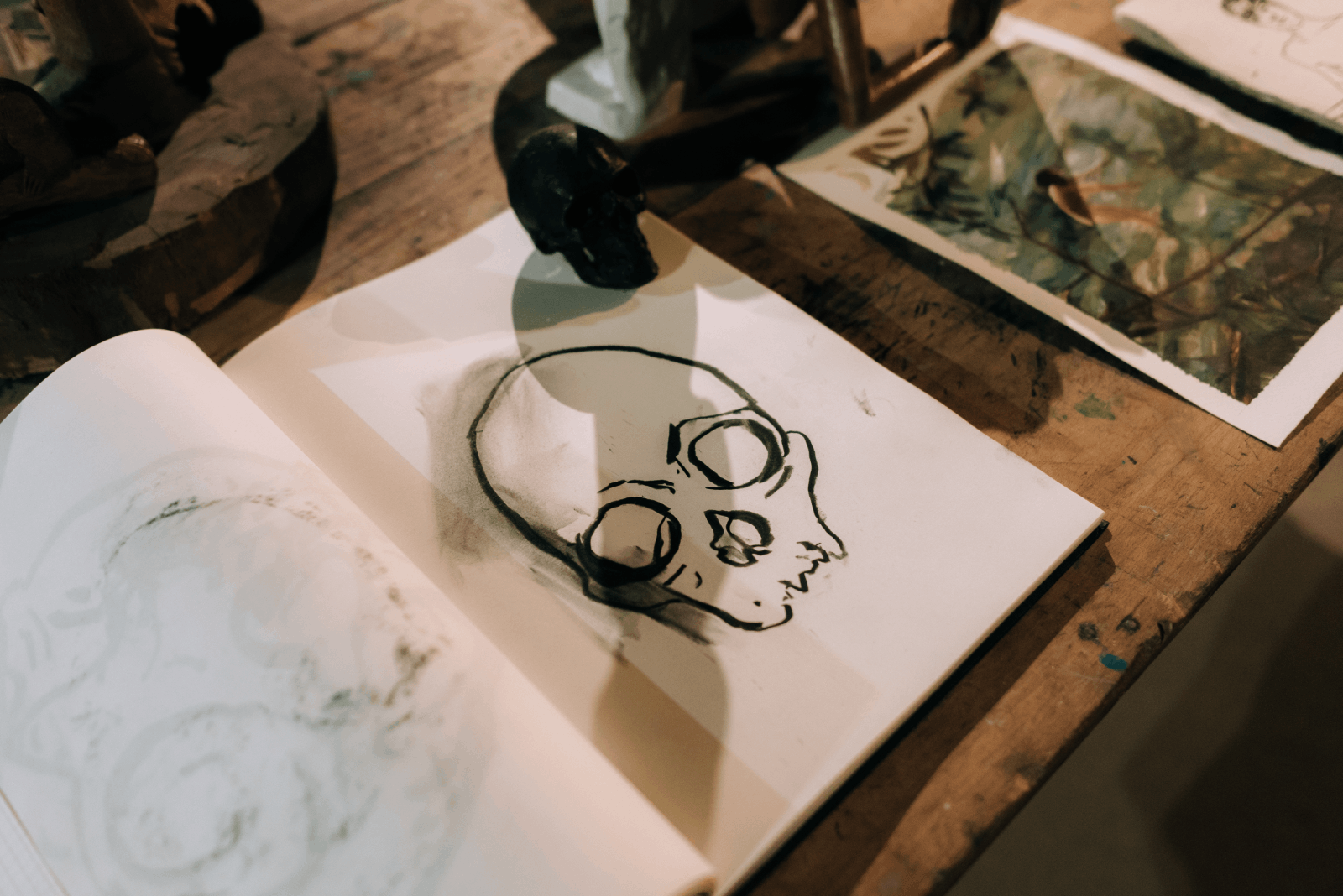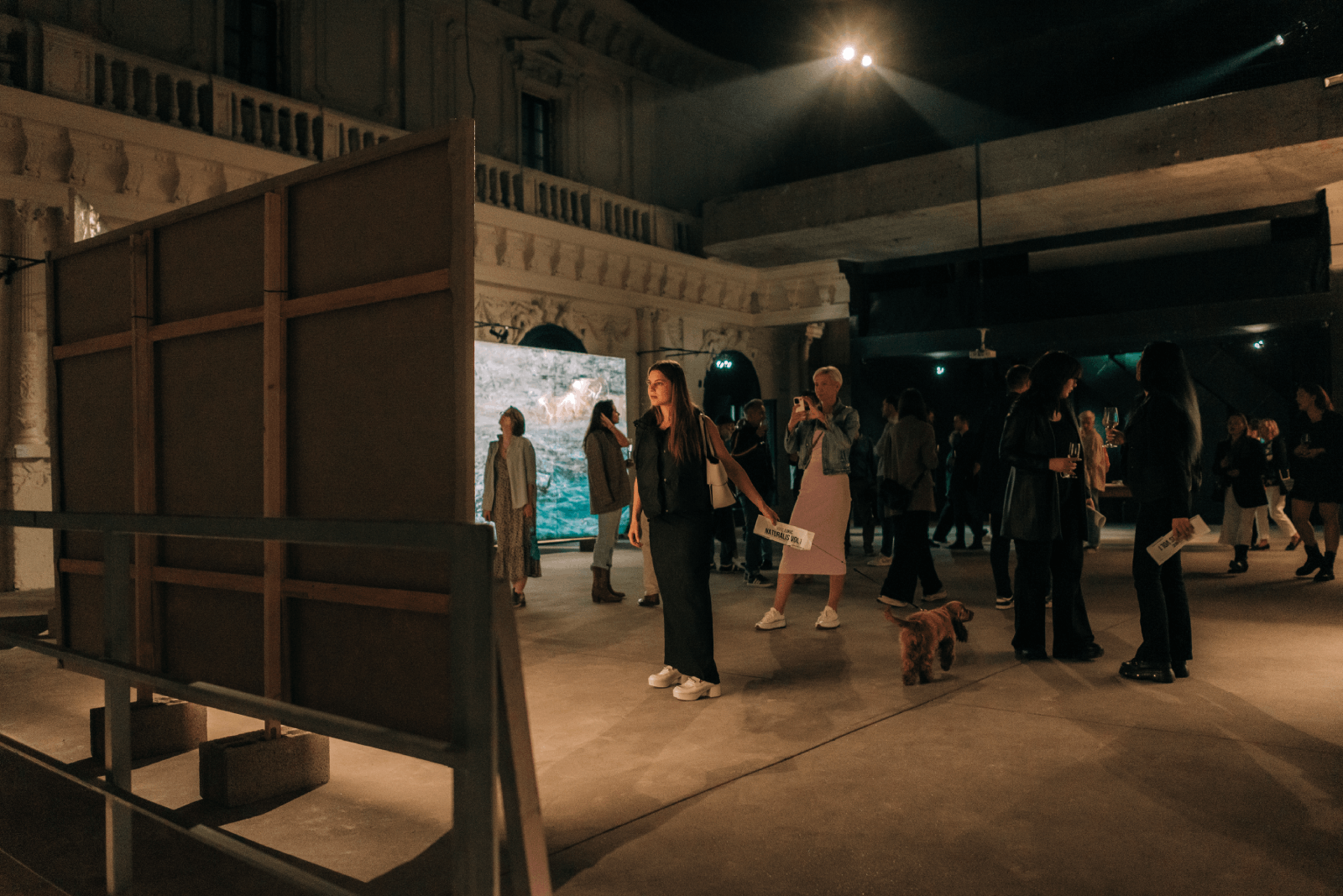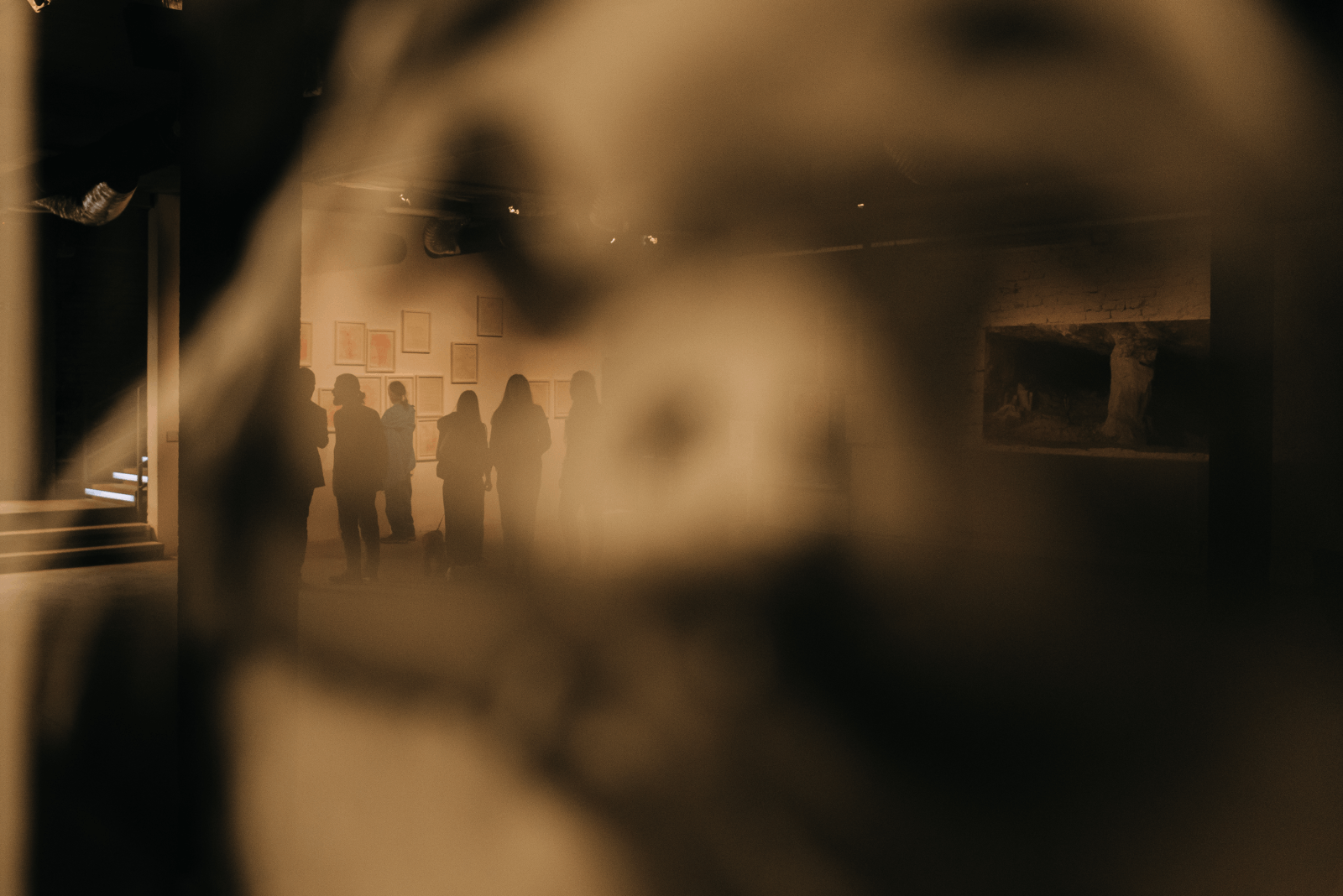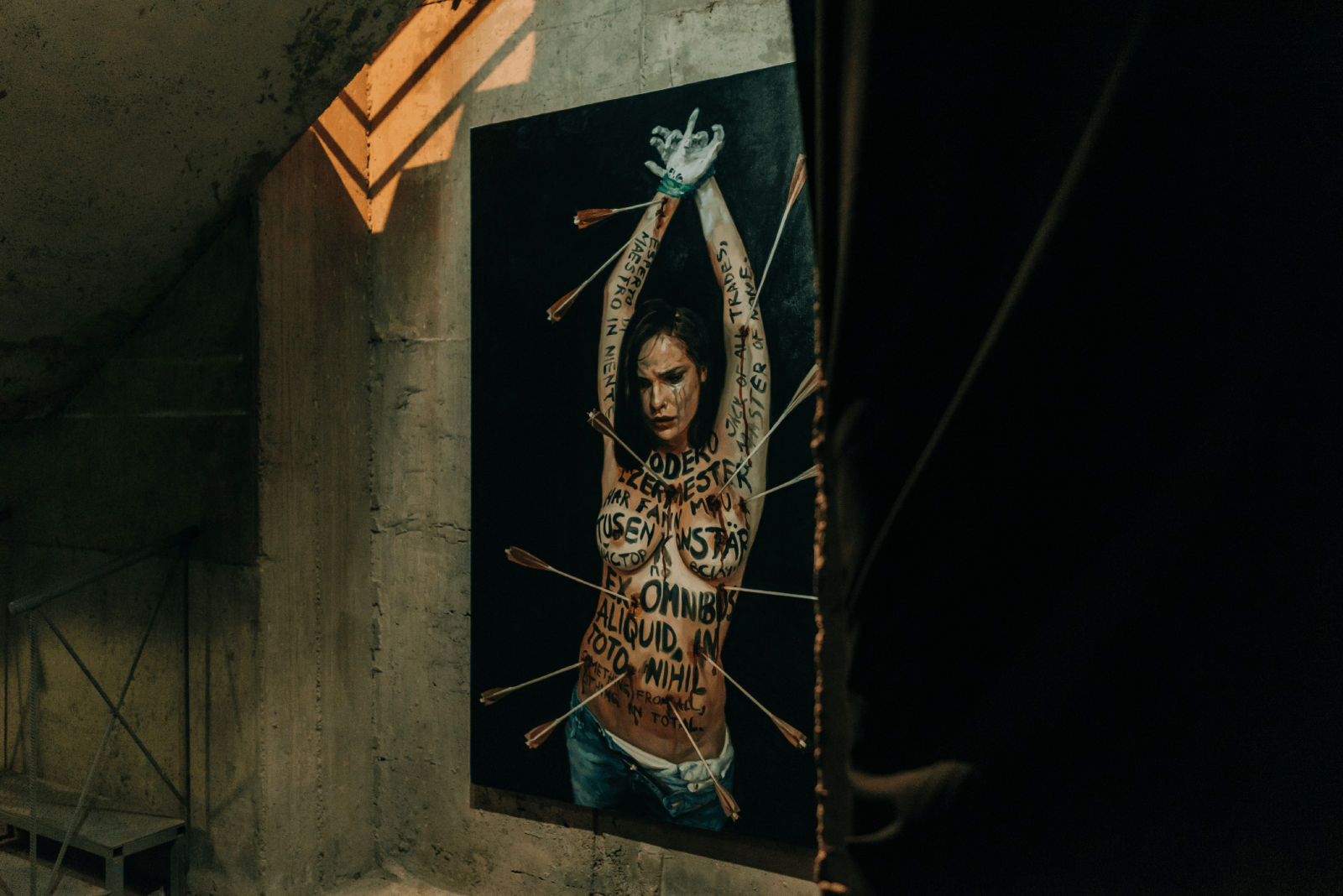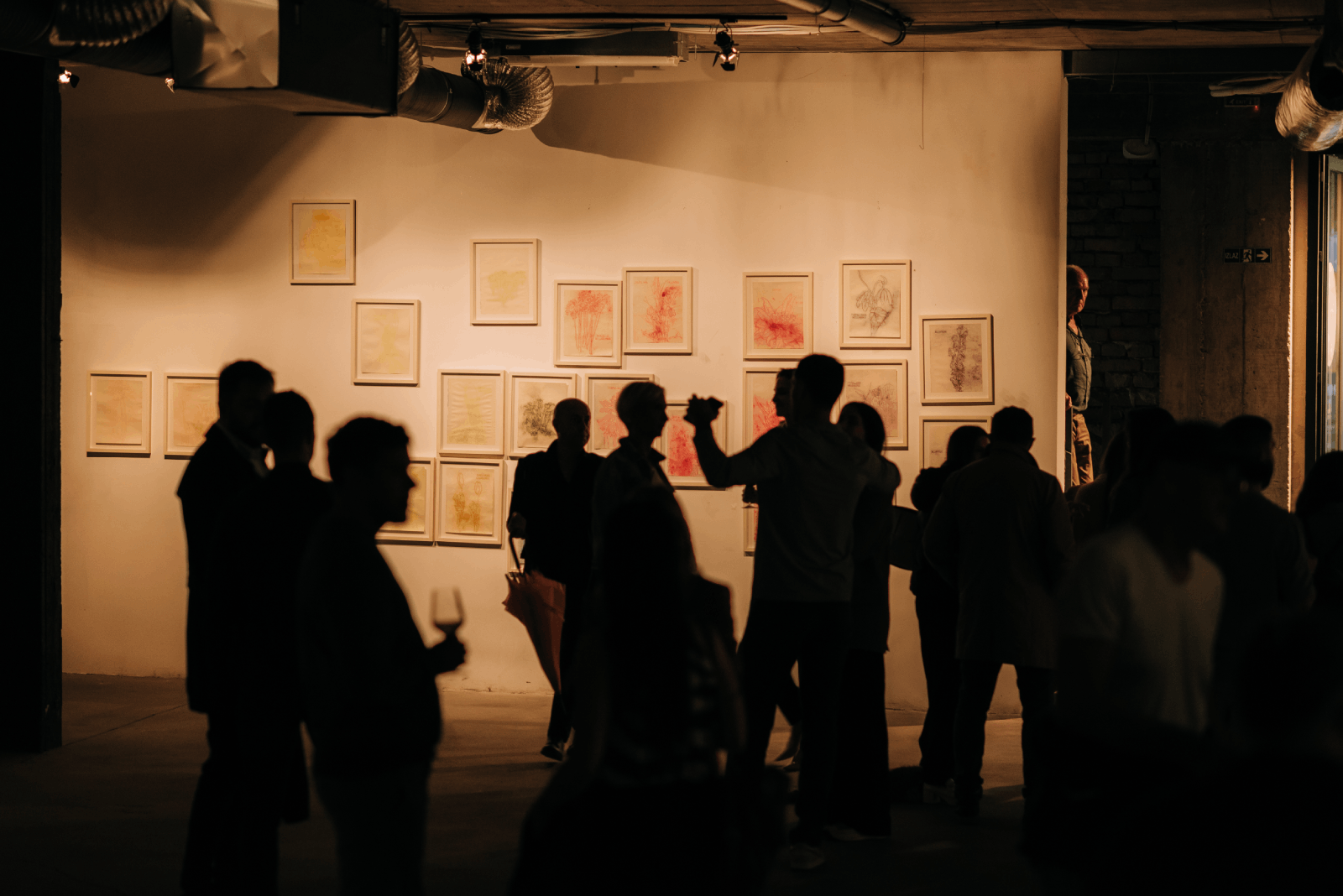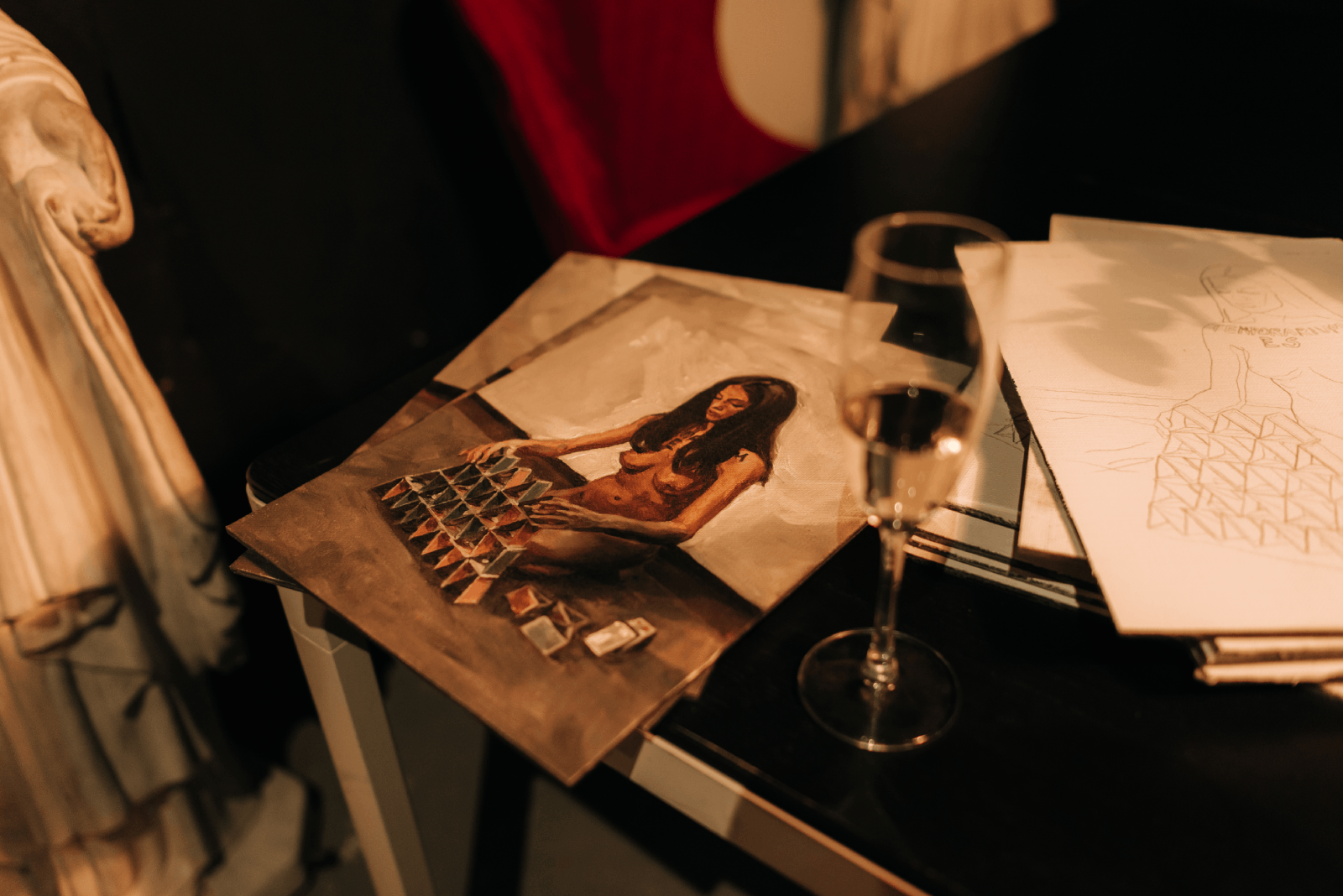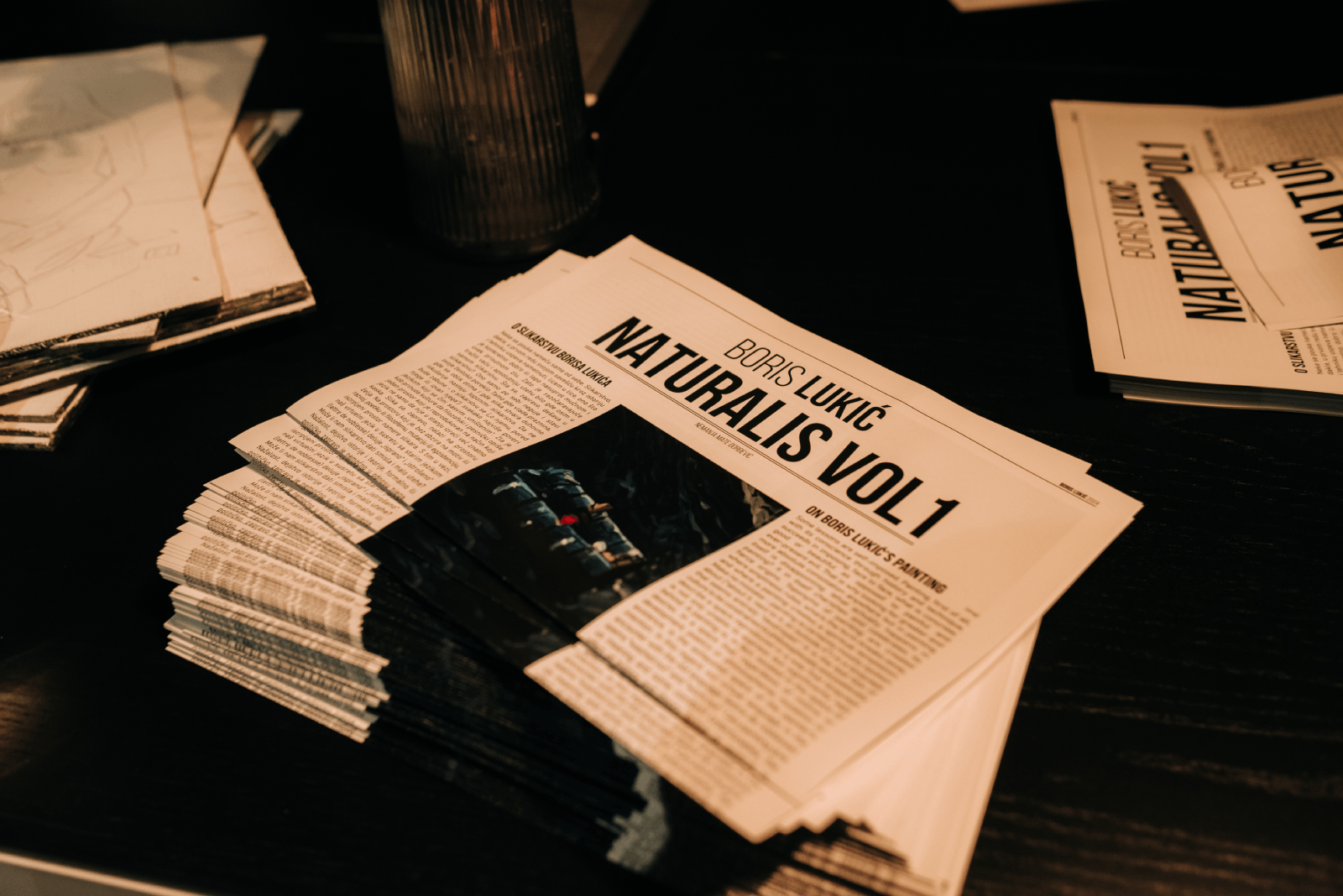On Boris Lukić’s Painting
Some lessons are self-imposed. Painting, first of all, with its conscience through history and technique, succeeds in imposing, face to face, what is concrete: good or beautiful as opposed to painful and ever-present evil. That is why looking for greater and more absolute consolation anywhere but in painting itself is disappointing. What actually happens in painting? It in itself cherishes and celebrates its fierce origins. Toponyms of painting are created where emptiness rules, where the form breaks away, and where a painting creates a spiritual temptation. Make no mistake – painting is certainly mostly spoken about (“about it, next to it, or outside it”) in a language that seems entirely “destroyed.” It is the bad fate of culture to be constrained to philosophically and poetically describe a space reproduced in a way that language is not only unable to express but significantly lags behind. A painting is, in fact, located in the space of desires. In a space that, regardless of motive or development, poetics or philosopheme, mutation or existence, is the exhausted space of the painter’s intention. In this regard, our virtual language in the encounter with the old language (lettre de noblesse) seems “washed out” and “worn out.” Can painting give us meaning and some comfort? Unfortunately, the effect of history and theory, formal or political, is actually powerless in relation to it. Such a painter is Boris Lukić. If we call his creation feeling or consciousness, we will soon discover that he stretches his actions on the strings of a pre-prepared terrain – read, imagined, or foreseen, trying to place us above the conditioned understanding of his own topics. That distance from the topic appears like a threat and, in principle, as an apparently chaotic function of a filigree-polished imagination that teases us on the edge of dream, reality, actuality, fiction, and representation.
The Body (or Revelation)
A stretched body on which words are written looks at us from the canvas. The signer of the meaning written on the body is the author, but the creator of the inscription in the system of the painting itself is unknown. The body seems to be a hook for pondering the inscription itself. Sometimes, the persona is surrounded by a boundless landscape, without beginning and end, while on other canvases, it is inside an empty room of a Beckettian character. A symbiosis is imposed that is, in fact, present all the time in the painting – the symbiosis of existence and history. The body is like a runway of temptation, a sign bait, motionless like the Sphinx. “Mutilated naked” in the open matrix of “nudist catharsis” (Boris’s ex libris). Sexual temptation is excluded, as is cheap pornography. What, then, can painting with this kind of narrative actually cause, except to declare that territory a dead zone? “Decadent immense à la De Sade” escapes us in this case. In this way, the work creates an anti-perversion as a model with which it operates, exactly the opposite of the voyeuristic procédé. Powerful compositions evoke the “child’s eye” in the observer – the sincere absence of a child. The ground heated up from the strokes of the brush. Thus, the canvas interprets the pretext, its own edge, and articulation, indicating the author’s craft and its consequences through textures or prints. The painter turns the “edge and shape” of his strokes into “detonation”! Into the infinity of rhythm, leaps – margins – pauses – saturation – immersion of movement or baptism. It is precisely Lukić’s brush that manages to untangle the knots, which are not only evident on the canvas but take their toll with their fiery tone in these sentences.
Flora and Fauna (Woman-Skull-Anima)
Everything that exists in nature is a living being. If it is not a being, then at least (according to Spinoza) it is a substance that cannot be thought about or even imagined – by chance. In itself, nature is God – an established necessity. Do we know of a better example than scenes in nature that show us the endless landscape surface? Isn’t every applied proportion of a man impossible compared to it? On the other hand, nature is “Satan’s church” (Antichrist, Lars Von Trier). In its reduction, this idea watches over nature’s male and female principles. It tells us the state of failed values (neurosis, aggression, insanity, perfidy, illness, etc.), unbearably guarding the liberation from all responsibility. That way, it causes a certain kind of purity of being to be defiled by the evil catharsis generated by the Mystic Forest or landscape. Is this kind of transcendental landscape familiar to Lukić? At first glance, the author’s painting process seems easy. It seems beautiful. But also dangerously powerful as a gift. In Giacometti, the skull is covered with pimples, and the painter Lukić puts the skull against a being. In the common frame, there is the strength, the weight of dimension and anatomy. Sometimes, a skull is a lone magical object amid flora without explanation. Establishing this connection clearly, we may find it hard to believe that anything like it has ever been painted. We feel that symbol of the human race, which has been gigantically stretched and endlessly exploited throughout history, literally. Existing art history is concerned with endless “multiplication,” certainly in “delusions that are dangerous to health.” In his time, Cézanne was accused of “killing the immediate flicker of life in painting.” Baudelaire claimed, arguing with Diderot’s view of Goya himself, that Goya laid bare the man to an extent that broke down the fence between salon life, painting, and literature. I believe that Boris Lukić is inseparably bound to the beautiful and sublime.
In his time, Melville managed to record in his, so to say, diaries, relying on omophagy (like Carl Vogt and Gir de Rialle), the man-eater as honorable and philanthropic in the circles of nature before his daily routines of life. The man-beast is an ancient myth – an archetype that, using illuminative and aberrative space, we recognize with delight in Lukić’s paintings. In a recent series of works, Lukić elevates this very animal to myth, not reducing it to a symbol but giving it the autonomy of the Master. He shows the beast’s movement, the perfectly unfinished sacrifice of a pack (dogs, wolves, hyenas, etc.) for prey, conquering the territory of a forest or park. Feast or survival? There is no safe place from which to examine the cause that propels the animal world to act with such surgical precision in self-preservation. We observe and quietly listen to our inner turmoil. In vain, right? Then, we attribute such a scene to humans, while we blame animals for the same. Those heartbreaking scenes, not prescribed by the genre, are not even worn out, let alone outmoded. They cherish richness. The richness we find in Shakespeare or Tolstoy, in Goya, Velázquez, or La Tour, in the explosion of virtue. This is a topic that has the right to be beyond and above the habits of modernity and everyday life! This exact contribution of Lukić’s is a sonata in itself. The sensuality of the nudes is far from terrifying, but it speaks of the color that depicts the invisible layer of skin, the membrane beneath which we sense blood flow, flesh, and bones. Such a body is literally “healed” by the act of painting. You will be left “speechless” – because the body is a transmitter that radiates when meeting an animal, a capital raven, or a machine while in a blissful state. The danger is, therefore, even greater because that frame is rubbed with the white noise of the apparatus, which seems silent. In that frame, two separate hearts (the mother’s and the fetus’s in the womb) are beating under the gentle hum of the apparatus. Is the third heart a pulse of machine voltage in the form of an inaudible hum? The author is aware of the dangers and simplistic messages. Therefore, a high-style painting that justifies it is essential. It actually sends its emissaries to Earth, and we know it. When we stand in front of the canvases of the author, we know that he is fascinated by the hardness of the craft. If we exclude those and such specifics of the painting, who will conjure up lace and snow, who will present as awake the shoulders of earthy soil surrounded by forest ramparts, the white fingers of violets, a broken bird’s nest, or the eyes of the forest if not the painter, from the inside, without barbaric sensibility?
